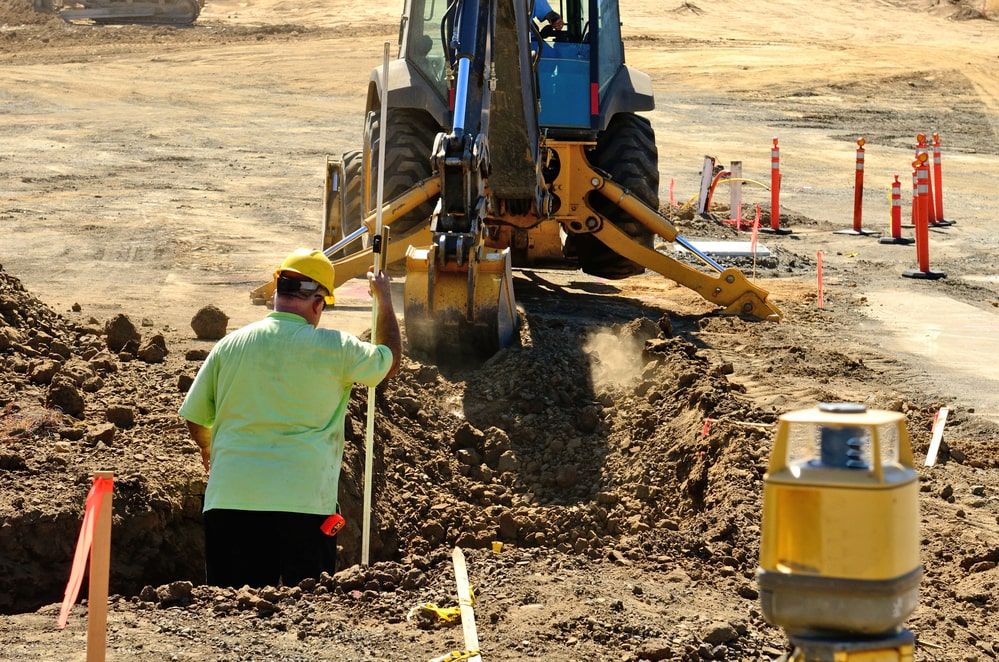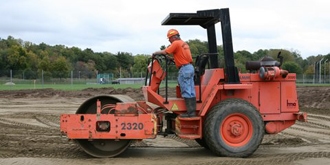Cost Effective Lancaster Excavation - High Quality Excavation at Competitive Prices
Cost Effective Lancaster Excavation - High Quality Excavation at Competitive Prices
Blog Article
Thorough Exploration: The Science Behind Superior Excavation Practices
The realm of excavation practices is a domain name where scientific research intertwines with workmanship to uncover the mysteries concealed underneath the planet's surface. From ancient hand devices to modern hydraulic excavators, the advancement of excavation strategies has been a testimony to human resourcefulness and technical innovations. What genuinely establishes premium excavation techniques apart is a deep understanding of geological concepts, paired with the application of sophisticated tools and methodologies. By checking out the scientific research behind these techniques, we can reveal the keys that exist beneath our feet and value the precision and competence that go into every dig.
Development of Excavation Methods
Throughout background, the development of excavation strategies has played a vital role beforehand building and construction methods and historical discoveries. From the basic devices made use of by our ancestors to the advanced machinery used in contemporary times, the development of excavation methods has substantially changed exactly how we come close to various jobs.
In ancient times, manual labor with fundamental devices such as shovels, pickaxes, and wheelbarrows was the key method of excavation. This labor-intensive process restricted the deepness and range of excavations, usually resulting in slow progression and restricted accessibility to specific sites. As people progressed, so did the methods and tools made use of for excavation.
The Industrial Revolution marked a transforming point in excavation methods with the intro of steam-powered machinery. In contemporary times, modern technology plays a crucial function in excavation, with improvements like General practitioner systems, drones, and 3D scanning improving accuracy and efficiency in the field.
Function of Modern Technology in Excavation

The assimilation of innovative technology has actually basically changed the field of excavation, improving precision and effectiveness to extraordinary levels. Among the key technological developments that has actually significantly influenced excavation techniques is the usage of general practitioner systems. These systems enable accurate mapping of excavation websites, making it possible for operators to precisely locate below ground energies and frameworks. Furthermore, using telematics in excavation devices has made it possible for real-time surveillance of device performance, leading to positive maintenance and raised functional performance.
In addition, the development of 3D modeling and simulation software has structured the planning process for excavation tasks. Operators and engineers can currently visualize the whole excavation process before breaking ground, enhancing and identifying prospective obstacles process. In combination with this, the application of drones in excavation activities has assisted in airborne surveys, volumetric dimensions, and website inspections with unmatched speed and accuracy.
Geological Principles in Excavation
An understanding of geological principles is essential for making certain the architectural stability and security of excavation sites. Geological elements play a crucial function in figuring out the usefulness and safety of excavation jobs (septic ohio). One essential geological principle to take into consideration is the sort of dirt or rock existing at the site. Various soil kinds, such as crushed rock, clay, or sand, have differing levels of stability and require different excavation methods. Natural dirts like clay might call for added assistance to avoid collapses, while sandy dirts may be prone to disintegration during excavation.
By conducting detailed geological surveys and evaluation, excavators and engineers can create techniques to alleviate threats and make sure the effective conclusion of excavation jobs. Ultimately, including geological principles into excavation practices is crucial for accomplishing secure, efficient, and lasting results.

Most Recent Devices for Excavation
In the realm of excavation techniques, modern advancements in tools have revolutionized the efficiency and accuracy of excavation processes. These drones can offer detailed airborne studies of excavation sites, providing real-time data on topography and potential dangers.
One more cutting-edge device obtaining popularity is the implementation of 3D printing innovation for creating custom excavation devices. This enables the manufacturing of specialized tools that are tailored to the specific demands of a job, increasing effectiveness and minimizing downtime.
Moreover, advancements in materials science have led to the advancement of stronger and much more resilient excavation tools. dump truck companies in ohio. Tungsten carbide-tipped excavator accessories, as an example, offer remarkable performance in dig this challenging ground conditions, improving efficiency on-site
Science's Influence on Excavation Practices

Furthermore, innovations in materials scientific research have actually caused the production of more powerful, much more resilient excavation devices and tools. The usage of composite materials in diggers and shovels has improved their performance and longevity, inevitably boosting performance on excavation sites. Furthermore, scientific research study on dirt auto mechanics and geotechnical design has provided useful insights right into dirt behavior, permitting excavation professionals to make educated decisions regarding excavation techniques and dirt stablizing methods. Generally, scientific research proceeds to drive innovation and improvement in excavation techniques, making excavation jobs extra efficient, cost-effective, and sustainable.

Conclusion
Finally, the development of excavation strategies has been greatly influenced by improvements in modern technology and a deeper understanding of geological my site concepts. The most recent devices and devices utilized in excavation have enhanced efficiency and accuracy in the field. The application of scientific knowledge has considerably boosted excavation techniques, causing much more effective and lasting approaches for excavating various kinds of products.
In the realm of excavation practices, contemporary advancements in tools have transformed the performance and precision of excavation processes. By leveraging clinical concepts, the excavation market has been able to considerably improve efficiency, precision, and safety and security in excavation processes. GPR enables excavation groups to non-invasively check and map subsurface frameworks, utilities, and potential hazards, allowing them to plan excavation projects with better accuracy and minimized danger of mishaps.
In addition, clinical research on dirt mechanics and geotechnical design has actually provided valuable insights into dirt behavior, permitting excavation experts to make enlightened decisions relating to excavation techniques and dirt stablizing strategies. On the whole, science proceeds to click this link drive innovation and enhancement in excavation practices, making excavation jobs a lot more effective, cost-effective, and lasting.
Report this page